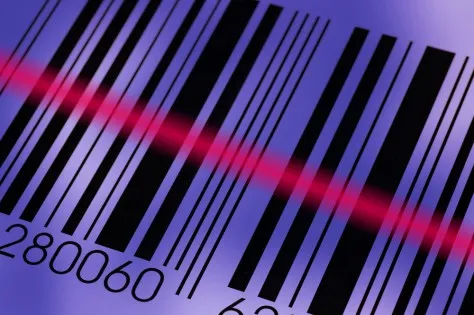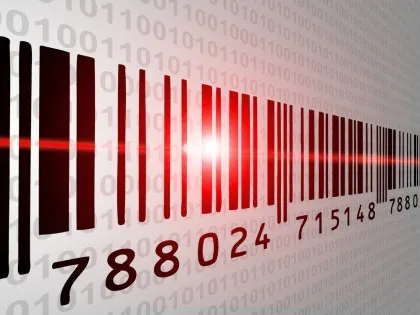
Handwritten tags on merchandise in a small shop is something of a novelty. It lends an air to the place not typically found in larger stores or big-name departments.
It’s also horribly inefficient.
How long does it take you and your staff to write out those tags? They need to be legible, confined to a certain amount of space that is both visible and restricted, then attached to your items before stocked! And then your checkout procedures? You get to manually input each and every price – Heaven help a mistake on your 10-key! – and decipher everyone’s handwriting! Your inventory? Set aside time for a hand count.
The tradeoff for “quaint novelty” seems lopsided now, doesn’t it?
Perhaps it’s time for you to invest in a barcode solution for your business?

Sound frightening? Not too keen or savvy with technology? Don’t worry: If you can work your phone or send an email,
you can work with barcodes. These systems are widespread and more user-friendly than some preinstalled apps on your average smartphone, and why shouldn’t they be? Businesses depend on these codes, the devices used to read them, and the databases compiled from their information to keep their doors open! Scan, read, and you instantly access your inventory database, edit as you sell, and avoid cramps from so many handwritten tags.
Barcodes are considerably
more accurate than manual methods, in part because they reduce the likelihood of human error in inventory matters – the amount of a particular item in stock, reordering needs, price checks – and in the reporting of sales statistics. You spend less time in searches of old sales slips to learn what sold, what sold poorly, and what never left the shelves and more time on sales strategies and furthering your business goals.
Consider this: The
average person makes roughly 10 errors per 1,000 keystrokes, 1:100. That can be as few as 25 items to reach 100 keys! The ratio of errors to scan?
1:10,000.
The costs of equipment, of supplies and code labels? Easily offset: Remember the question asked before: How long did you spend on your handwritten tags? What about your manual inventory checks? On key-ins of prices? Now that time can go toward other responsibilities. Your inventory can take a matter of hours instead of days! You can help your customers make their purchases and go on about their days in a timelier fashion!
Your inventory, your livelihood in your business: Can you assure your customers you can provide a certain hot item to each person who walks into your store? Your equipment, what you need to make your operation run smoothly: Did you loan out a tablet to one of your employees? Did it ever make its way back? How long ago did that happen? Poor
management of these essentials can easily lead to shuttered doors, problems with the government thanks to tax errors, and more. The use of a barcode system eases the potential headaches and the hope-and-pray syndrome on item location and use history.

These codes can also help deter theft thanks to their traceable codes. Should something come up missing, records could identify the last known user and at least provide a starting location for your investigation. Of course, you would also need to institute and enforce a checkout policy within your business that required
any borrowed asset be scanned and logged in the database.
Now that you decided to introduce barcodes to your business – which I’m certain you did – how will you read them? Will you invest in
traditional handheld scanners, and if so, what kind? A
laser scanner that can scan codes from some distance away? An
omnidirectional device that can read codes at any orientation? A
pen scanner that needs to physically touch the code to read it? What about a
mobile phone app for easier on-the-go scans, such as during a county fair or exposition?
Should you opt to take the last route, you’ll also need to consider the devices on which this app will be installed: Will your business supply them or will you choose a B.Y.O.D. (Bring Your Own Device) approach? A quality app can put smartphones on par with dedicated scanners and help bring you closer to management success. Bluetooth capabilities make it simple to sync your devices to your databases and the phone’s other capabilities make it an in-hand mobile office, which means your financial, scheduling, and ordering duties all sit in your palm.
But,
should you choose B.Y.O.D., what happens if you and your employees part ways? Did you stipulate that they device could only access the data, that said data did not become their property? That any information saved must be removed prior to their last day of employment? What if their device gets lost or stolen? Could someone gain access to your business records? Could you afford the offer company phones dedicated to this purpose instead?
Or would it be more prudent to order dedicated scanners? These devices still offer a slight advantage over mobile phones: They call for less additional security software (lack of Internet access in most cases), are created for the express purpose of barcode scans (which increases their competence and calls for fewer adaptations to integrate with systems), and would belong solely to your company. It would be
impossible for someone to forget their scanner at home! Their durability is greater as they are built for frequent use in warehouse settings, on the sales floor, and in other settings where a smartphone might be destroyed if dropped.
Do you still handwrite your sales tags? Have you thought about an upgrade to a barcode system? What’s holding you back?
 Handwritten tags on merchandise in a small shop is something of a novelty. It lends an air to the place not typically found in larger stores or big-name departments.
It’s also horribly inefficient.
How long does it take you and your staff to write out those tags? They need to be legible, confined to a certain amount of space that is both visible and restricted, then attached to your items before stocked! And then your checkout procedures? You get to manually input each and every price – Heaven help a mistake on your 10-key! – and decipher everyone’s handwriting! Your inventory? Set aside time for a hand count.
The tradeoff for “quaint novelty” seems lopsided now, doesn’t it?
Perhaps it’s time for you to invest in a barcode solution for your business?
Handwritten tags on merchandise in a small shop is something of a novelty. It lends an air to the place not typically found in larger stores or big-name departments.
It’s also horribly inefficient.
How long does it take you and your staff to write out those tags? They need to be legible, confined to a certain amount of space that is both visible and restricted, then attached to your items before stocked! And then your checkout procedures? You get to manually input each and every price – Heaven help a mistake on your 10-key! – and decipher everyone’s handwriting! Your inventory? Set aside time for a hand count.
The tradeoff for “quaint novelty” seems lopsided now, doesn’t it?
Perhaps it’s time for you to invest in a barcode solution for your business?
 Sound frightening? Not too keen or savvy with technology? Don’t worry: If you can work your phone or send an email,
Sound frightening? Not too keen or savvy with technology? Don’t worry: If you can work your phone or send an email,  These codes can also help deter theft thanks to their traceable codes. Should something come up missing, records could identify the last known user and at least provide a starting location for your investigation. Of course, you would also need to institute and enforce a checkout policy within your business that required any borrowed asset be scanned and logged in the database.
Now that you decided to introduce barcodes to your business – which I’m certain you did – how will you read them? Will you invest in
These codes can also help deter theft thanks to their traceable codes. Should something come up missing, records could identify the last known user and at least provide a starting location for your investigation. Of course, you would also need to institute and enforce a checkout policy within your business that required any borrowed asset be scanned and logged in the database.
Now that you decided to introduce barcodes to your business – which I’m certain you did – how will you read them? Will you invest in